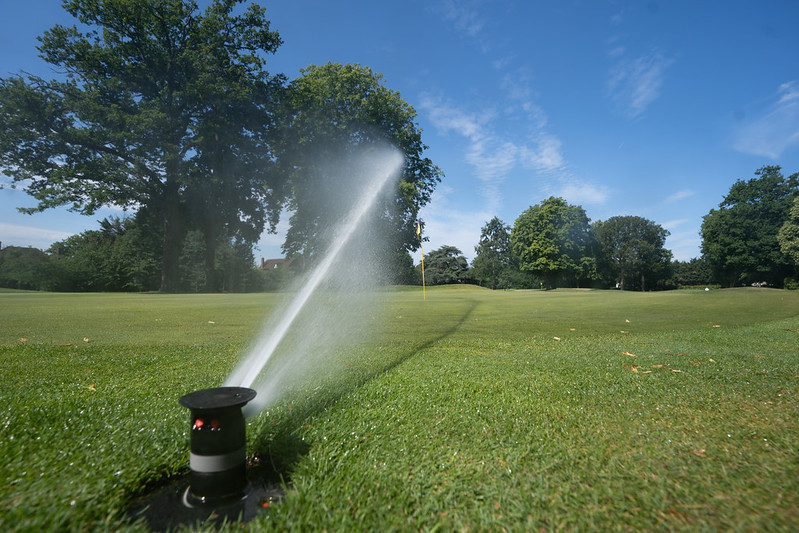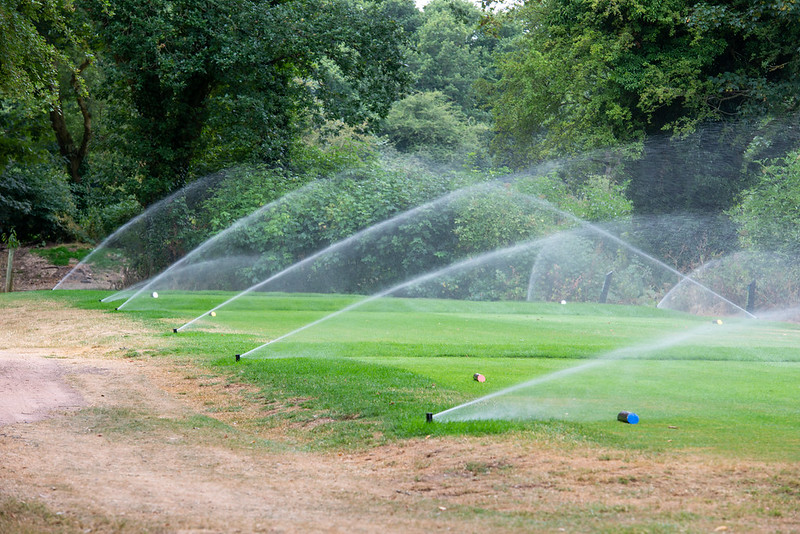Back to basics: How to get the most out of your irrigation system
Despite being essential to the health and playability of turf, irrigation can often fall foul to the age old adage – out of sight, out of mind.
The result? When problems do arise, they can come on quickly and won’t always have an obvious solution, meaning a contractor has to be brought in to rectify the issue.
What do I need to know about irrigation systems?
Finding an irrigation system that suits your course can be tricky, as can knowing the best sprinkler configurations for different areas of a course, their set-up, and best practices for maintenance, support, and servicing.
Therefore, it’s best to strip everything back to basics when it comes to sprinklers and hydraulics, so you can make an informed decision on which irrigation system suits you best – and it gives us the chance to dispel a few irrigation myths in the process!

How to take care of your irrigation system
One of the most common issues that hinders the operation of an irrigation system is negligence. Too often, an ageing system has not been installed to a suitable standard, or is no longer set up properly for the modified course it needs to irrigate.
As a result, it fails to perform properly. Common errors arise from cables that aren’t potted correctly, sprinklers that aren’t set up properly, debris left in the pipework from installation, and incorrect data within the controller.
Careful installation pays off
Responsible irrigation operation starts from its installation, so it’s important to keep the following in mind:
- For course managers: always allocate the time and care needed for the installation of each system
- For suppliers and installers: always oversee everything to ensure the standard of installation matches the quality of the product and ensure customers don’t incur unnecessary operating costs and repair time down the line
Invest in a consistent maintenance program
When it comes to good housekeeping, irrigation requires the same attention as the specialist machinery used to maintain and cut your grass. Other than the land and its bricks and mortar within, an irrigation system is likely the biggest asset you will own, a valuable piece of equipment essential in achieving the perfect playing surface.
Maintenance tasks such as replacing old grease filled crimps for new 3m DBY/R units, routinely checking that controller data matches how sprinklers are set up in the field, inspecting arcs to confirm the application area is correct, and making sure service earth points are always secure are all easy to do and can make a big difference.

Fine-tune sprinkler adjustments
When it comes to servicing, the most common problem can arise from the sprinkler set-up.
Different types require different considerations. For example, some find adjustments such as lifting the riser and adjusting the collar tricky – a situation that is unfortunately unavoidable as that’s just simply how the sprinkler is set up.
However, a sprinkler with a ratcheting arc system makes setting up the arcs a lot easier. And it’s things like that which are important considerations when it comes to which sprinklers you opt for as it can save a lot of downtime in the long run.
Invest in smart software to lighten the load
All the pressure doesn’t have to be on those using it to identify any issues that arise, especially not in the days of swiftly advancing technology. Good quality equipment can be relied upon to share the job.
Use software like Toro’s SitePro, which can perform an automatic communication health check every time the system is operated. Any decoders not communicating should be highlighted in red on the course map and listed in the Daily Course Report for review on arrival.
Not only that, a system capable of performing end-of-line checks on its decoders without energising the coils and carrying out solenoid tests to check coil functionality is an incredibly useful function to have.
An open-case design, moreover, future-proofs your investment, as it means sprinkler developments can be accommodated to fit within the existing sprinkler design.
Clubs use Toro Lynx for sustainable irrigation
Having access to detailed and comprehensive information on all aspects of the pitch and its irrigation programmes, while monitoring water, energy, and other inputs is a more sustainable way to manage your turf.
And the good news is, you don’t have to take our word on the difference using smart software can make.
Leeds Rhinos provides a classic example of how software gives management teams the power to make big-impact, long-lasting decisions.
Leeds Rhinos implemented the Toro Lynx system, complemented by wireless soil sensors installed beneath the surface, a setup that facilitates proactive planning and real-time adjustments, enhancing both plant health and playing surface conditions. Additionally, the system seamlessly integrates with other turf management practices for comprehensive maintenance.
Operators can pause, stop, or reflow their system depending on the weather conditions, such as wind speed and rainfall, or in the event of a pump going down, mid-irrigation cycle.
Not just that, Lynx works in conjunction with Grundfos, Flowtronix, and Watertronics pump sets, with each configuration being compatible and able to deliver outstanding results.
Be proactive in your machinery choices
We find customers can often be hesitant to meddle with the irrigation system due to uncertainty over the outcome of any changes made. Unfortunately, this tends to lead to a reactive (as opposed to proactive) mindset, if or when an issue occurs.
The best way to overcome uncertainty is to be informed, which is why Reesink Hydro-Scapes offers comprehensive support and training with experts on hand to help you with your system.
You can expect to be taught best operating practices for sprinklers, what potential faults look like, and how to identify and deal with these problems proactively, for example, did you know:
- The hydraulic tubing fitted to the outside of the Toro Infinity sprinkler body is attached to all sprinklers below ground and away from damage;
- The gear drives of the Flex and Infinity sprinklers are all lubricated with water rather than oil;
- The cable joint between the lateral signal cable and the decoder input is inside the enclosure?
This kind of information not only provides a fundamental understanding of all aspects of irrigation, but also dispels any pre-existing assumptions of how some sprinklers operate.
Reesink aims for open lines of communication when it comes to irrigation and can show end-users how equipment can be made to last longer, do a better job, and reduce operating costs.
Request an irrigation system demonstration for ultimate peace of mind
Any concerns are best tackled by asking for a demonstration.
Two-wire testing can be illustrated, including identifying the pressure regulation valve (PRV) on the side of the sprinkler. With the Infinity sprinkler, there are four fixed settings, and having a demonstration can avoid any miscalculations when measuring head and nozzle pressure, allowing for accurate precipitation data to be calculated.
In the meantime, for anyone wanting to talk more about their irrigation system, contact us via [email protected]